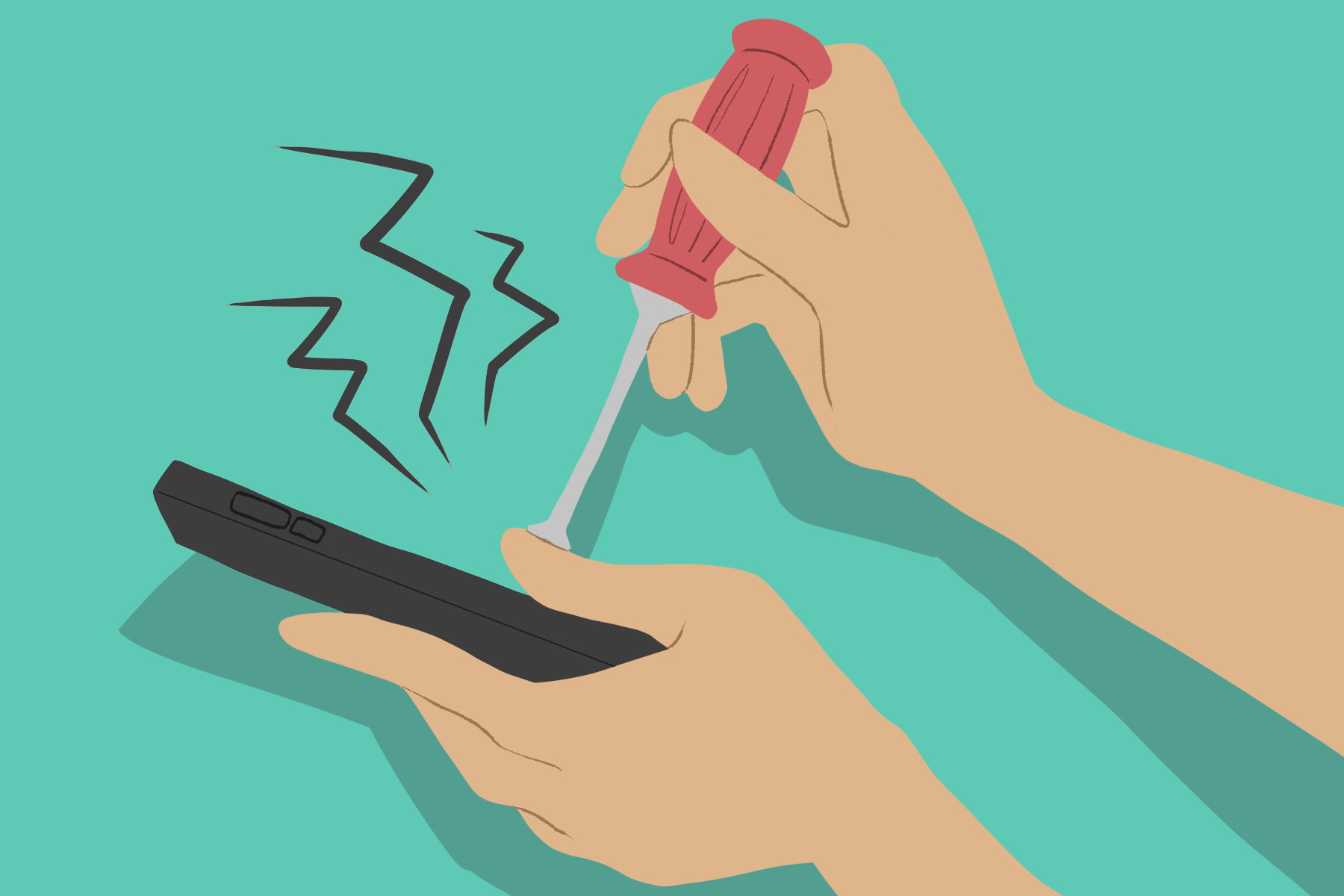It’s no secret that modern technology suffers from shorter lifespans and greater fragility than electronics from over a decade ago. While older phones like the famous Nokia 3310 built a reputation for their resilience against blunt force, the fragile screens of recent iPhones easily shatter with a single fall. Given this fragility and the high price of new electronics, customers need to be able to repair their devices. But most companies limit the sale of spare parts and deliberately design their products to prevent unofficial repairs, forcing consumers to pay for the original manufacturer’s costly repairs or settle for a full-priced replacement. However, just last year, President Joe Biden signed an executive order for the Federal Trade Commission (FTC) to begin implementing right to repair laws around the U.S. These laws would force companies to ensure future products are easier to repair. Despite the obvious benefits of this proposal, New York is the only state to have successfully passed a right to repair law since 2021, begging the question of why the rest of the country is so hesitant to adopt this policy.
What Is the Right To Repair?
The goals of right to repair laws differ among its many proponents, but most proposed variants center around a few specific objectives. First, companies must ensure that the spare parts, diagnostic tools and information necessary for repairing specific products remain consistently available to consumers and third-party repair companies. Buyers should also receive manuals or schematics that detail which parts are needed to resolve internal issues with the machinery. Finally, future products need to be designed with repairability as a priority rather than with features that obstruct unofficial repairs and part installations.
Each of these regulations greatly benefits consumers, but the goal of reducing the need for new devices and manufacturer repairs understandably worries many of the companies involved. Companies like Apple and LG attribute the bulk of their yearly revenue to new product sales, meaning right to repair laws pose a significant threat to their earnings. Even some consumers and tech experts worry about the safety implications of making devices easier to modify and repair. As a result, it’s worth understanding both the benefits and risks of the right to repair.
Protecting Consumers with Simplified Repairs
Although many right to repair proposals suggest altering the designs of future electronics to be easier to fix, enforcing this change is much harder than it sounds. Recent changes to phones and laptops, like the absence of removable batteries, force consumers to frequently replace their devices. Yet, these controversial design decisions are also the unfortunate result of advancing technology and consumer tastes. Many consumers prefer the portability of slim devices but also want electronics that feature the most modern software on the market. To meet these demands, manufacturers cram as many components together in the device’s limited space, resulting in sacrifices such as trapping the battery behind a more protective, non-detachable outer casing. The profitability of forced replacements may have contributed to these changes, but their equally practical motivations make it difficult to determine if these design choices stem from anti-consumer intentions or genuine compromises.
However, not all anti-repair trends have valid excuses. In 2017, John Deere began adding diagnostic sensors to its latest tractors, planters and other electronic products. These sensors monitor the internal parts and inform users when anything malfunctions. If the user attempts to replace a damaged part, the sensors will activate a software lock that renders the device inoperable until the newly installed component is approved by an official John Deere technician. This unnecessary restriction wastes owners’ time and money, while also allowing the manufacturer to monopolize the repair market. After years of persistent complaints and a class-action lawsuit, John Deere recently started selling maintenance software that permits customers and third-party shops to reenable these machines on their own. But the $1,200 price tag proves this system only remains to create an unnecessary paywall for customers.
Anti-repair practices aren’t limited to consumer devices, either. McDonald’s ice cream machines became the subject of a $900 million lawsuit after Kytch, a tech company that specializes in developing maintenance software, accused the fast food corporation of allegedly running a “repair racket” alongside one of its ice cream machine suppliers, the Taylor Company. As reported by YouTuber Johnny Harris, Taylor’s ice cream machines can only be repaired by a licensed Taylor technician, which forces franchise owners to pay hundreds of dollars for each visit. Most employees and managers also never receive the necessary training or information to access vital maintenance functions or understand the machine’s cryptic error messages.
Kytch’s solution to this issue is an add-on device that bypasses these restrictions to deliver detailed error reports and additional device controls. However, by enabling employees to easily repair the machines, the device posed a threat to Taylor, which earned 25% of its revenue from technicians and selling spare parts. This prompted McDonald’s to send a companywide letter that banned Kytch devices from all restaurants and claimed the add-ons presented severe safety risks. Although the letter deprived Kytch of its only customers, the company might be able to make a comeback if it wins the defamation case filed against McDonald’s.
Both Taylor and John Deere demonstrate the necessity of right to repair laws. By designing their products to create an artificial dependence on their maintenance and services, each company creates a monopoly that only harms its customers. However, the right to repair could ensure these products are designed with user accessibility in mind, meaning consumers and store owners alike wouldn’t have to rely on third-party tools to bypass pointless restrictions.
Economic and Environmental Effects of Right To Repair
Most opponents of right to repair laws describe a few points that are worth considering for future legislation. First, modern devices are far too complex for most people to repair on their own. Manufacturing plants typically use robots to build new electronics, appliances and automobiles, resulting in precisely constructed and tightly welded products that were never meant to be disassembled. This provides fewer opportunities for people to make repairs, and consequently, fewer reasons to enforce the right to repair. Additionally, large companies that would be affected by these laws claim these regulations could possibly hurt their sales and even expose trade secrets and intellectual property.
An FTC report published in May 2021 noted that right to repair laws only demand information and schematics that are already shared with repair centers, meaning companies won’t have to worry about consumers or competitors being able to access patented or confidential material. However, enforcing these regulations would drastically change the markets of the affected products. Unable to depend on forced repairs for revenue, manufacturers might become more transparent about the repairability of their products and redesign electronics to appeal to tech-savvy consumers. With recent successful advancements in the right to repair movement, Apple, Google and Microsoft have all begun making these changes with their latest electronics.
Another major change that the right to repair could bring is the addition of a grading scale that measures the repairability of a product. France introduced this concept last year as the “repairability index,” setting a standard for other countries to follow. Having these visible labels on the packaging of electronics will likely influence consumer choices, thereby encouraging companies to increase the repairability of their products without sacrificing popular features. Even for people who replace their devices on a regular basis, the reassurance of long-term support makes for an excellent selling point. However, those who prefer to use the same device for as long as possible would be less likely to buy the latest electronics. This will likely lead to a decrease in sales for newer products, though manufacturers can partially recoup these losses by selling spare parts.
By encouraging manufacturers to design products with longer lifespans, right to repair laws actively discourage planned obsolescence and other wasteful practices that pollute the environment with discarded devices known as electronic waste (or “e-waste”). The United States Environmental Protection Agency (EPA) states that most e-waste contains dangerous substances such as lead, mercury, cadmium and arsenic. To deal with the constant production of e-waste, some countries ship their discarded electronics to developing countries, which leaks toxic chemicals into the environment and exposes people to substances that may cause diseases and neurological disorders. The production of e-waste increases by millions each year, with 57.4 million metric tons of e-waste produced in 2021 alone. The right to repair won’t fix this issue on its own, but it’s a step in the right direction.
Health and Safety Concerns
Despite the benefits of repairable devices, the ease of access to inner components may also remove protections against safety hazards. For people experienced with repairs, this is hardly an issue, but those unfamiliar with the dangers of mishandling certain parts may suffer injuries from attempting their own repairs. However, the right to repair creates an opportunity for companies to educate consumers through warnings on the packaging and in provided repair guides. Selling the tools needed for maintenance to third-party shops will also compel inexperienced consumers to consult professionals for repairs rather than attempt to fix products by themselves.
The ability to repair and even modify medical equipment raises similar concerns about people’s safety. Because of the sensitive nature of these devices and the vital functions they serve, introducing third-party parts or modified software should be avoided. As such, machinery used exclusively in professional fields requires some form of protection from right to repair rules. This isn’t as simple of a solution as it sounds, as completely excluding service equipment from the right to repair brings its own set of dangers.
At the beginning of 2022, financial troubles forced Second Sight Medical Products to abandon support for the bionic eyes the company had spent years testing with patients. However, this left the company’s 350 patients without any guidance for repairing their bionic eyes or replenishing the battery once it inevitably died out. One patient was lucky enough to find a doctor who offered him a spare replacement part, but this is only a temporary fix to a long-term issue. Obviously, right to repair shouldn’t enable patients or random third parties to attempt their own fixes on this equipment. But requiring companies like Second Sight to disclose repair information to other qualified medical professionals (at least after they are unable to maintain these services) will prevent similar issues with experimental technology in the future.
Solutions for the Future
The right to repair is vital legislation for the future of all tech industries. Providing people with the tools and information necessary to maintain their own purchased products will help to combat the repair monopolies and current level of electronic waste. Professional equipment certainly shouldn’t be as openly modifiable as consumer goods, but the right to repair can enforce practices that aid people who rely on defunct services. With recent advancements — such as the European Union and Australia establishing their own right to repair laws (albeit in limited forms) and more American states considering these regulations — these changes may arrive much sooner than we expect.

















